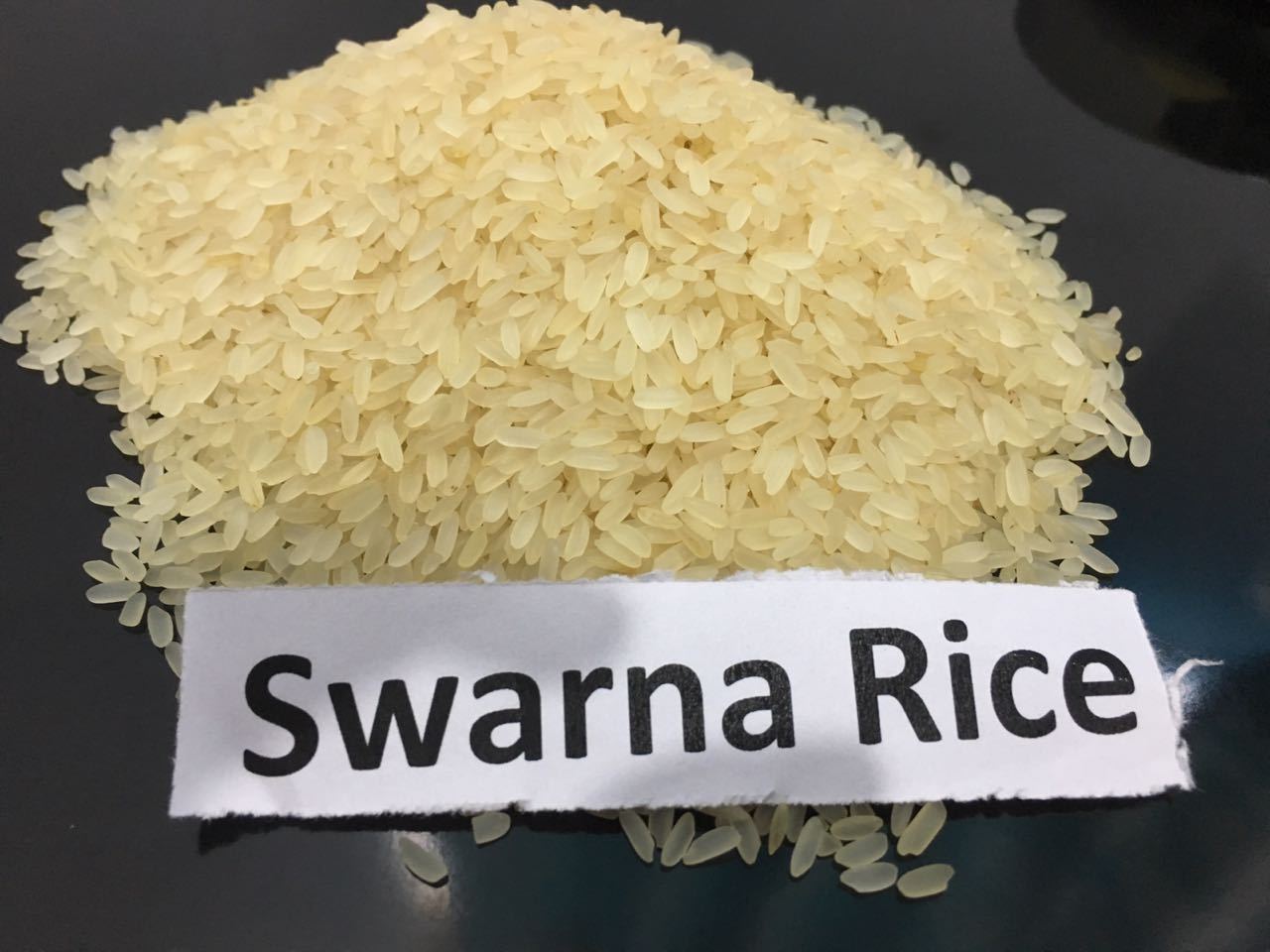Swarna Rice: A Staple of India and Bangladesh
Introduction
Swarna rice, also known as MTU 7029 in India, is a non-Basmati, medium-grain rice widely cultivated for its high yield, adaptability, and affordability. It is predominantly grown in the eastern and southern states of India, such as Andhra Pradesh, Telangana, West Bengal, Bihar, Odisha, and Chhattisgarh. The grains measure 5.0–5.75 mm in length, have a sticky texture when cooked, and feature a neutral flavor, making them highly versatile for a variety of dishes, including daily meals, rice porridge, and biryani.
In Bangladesh, its counterpart, Swarna-5, thrives particularly in the northern regions of Rangpur and Dinajpur, where it is valued for its resilience against challenging local conditions such as floods and drought. Both Indian Swarna and Bangladeshi Swarna-5 are staples in South Asian cuisine, supporting food security in the region.
Brief History
Swarna rice was developed in 1982 by the Andhra Pradesh Agricultural University (now Acharya N.G. Ranga Agricultural University) at the Maruteru Research Station. The variety was created through a cross between Vasista and Mahsuri, aimed at improving resistance to pests, diseases, and climatic stress while ensuring a higher yield. The release of Swarna contributed significantly to food security in India by providing a high-yielding and low-maintenance rice variety.
By the late 1980s, Swarna rice had spread to Bangladesh, where farmers adapted it into a variant called Swarna-5, which was tailored for the country’s flood-prone lowlands. In 2009, an improved variety called Swarna-Sub1 was introduced in India through collaboration with the International Rice Research Institute (IRRI). This version of Swarna was designed to be submergence-tolerant, allowing farmers to cultivate it in areas affected by seasonal flooding.
Cultivation
Swarna rice is grown under diverse climatic conditions, predominantly during the Kharif (monsoon) and Rabi (winter) seasons. The cultivation cycle varies slightly between India and Bangladesh:
| Country | Season | Sowing Time | Harvesting Time |
|---|---|---|---|
| India | Kharif (Rain-fed) | May–June | October–November |
| Rabi (Irrigated) | November–December | March–April | |
| Bangladesh | Aman (Rain-fed) | June–July | November–December |
| Boro (Irrigated) | November–January | April–May |
Soil and Climate Requirements
- Soil Type: Clay loam or silty loam with good water retention capacity.
- Temperature: Ideal temperature range is 25–35°C.
- Water Management: Requires 5–10 cm of standing water for optimal growth.
Best Cultivation Practices
- Nursery Preparation:
- Seeds are soaked for 24 hours, drained, and then sown in a prepared nursery bed.
- Seed rate: 30–35 kg per hectare.
- Transplanting:
- Seedlings 20–25 days old are transplanted at 20 cm × 15 cm spacing.
- Fertilizer Application:
- 100–120 kg Nitrogen (N), 40–60 kg Phosphorus (P₂O₅), 40 kg Potassium (K₂O) per hectare.
- Pest and Disease Management:
- Stem Borer & Brown Planthopper: Controlled using Carbofuran 3G or Chlorantraniliprole.
- Blast Disease: Managed with Tricyclazole 75WP (0.5 g/L spray).
- Sheath Blight: Controlled using Hexaconazole (1 ml/L spray).
- Expected Yield:
- India: 5–6.5 tons per hectare.
- Bangladesh: 4.5–5.5 tons per hectare.
Processing
Once harvested, Swarna and Swarna-5 undergo post-harvest processing, classified into two major types based on boiling:
Raw Rice (Unboiled)
- Processing: The paddy is dried and milled without boiling.
- Characteristics:
- White, softer texture after cooking.
- Cooks quickly (15–20 minutes).
- Shorter shelf life compared to parboiled rice.
Parboiled Rice (Boiled Before Milling)
- Processing: The paddy is soaked, steamed, and dried before milling.
- Characteristics:
- Golden-yellow color, firmer texture.
- More nutritious due to nutrient retention from the husk.
- Cooks slower (20–30 minutes) but remains non-sticky.
- Longer shelf life, suitable for storage and export.
Rice Grading:
- Grade A: Less than 5% broken grains.
- Standard: 5–25% broken grains.
- Lower Grade: More than 25% broken grains (used for rice flour and other products).
Nutrient Composition
Swarna rice provides essential nutrients, with slight variations depending on processing:
| Nutrient (per 100g cooked) | Raw Rice | Parboiled Rice |
|---|---|---|
| Energy | 130–150 kcal | 140–160 kcal |
| Carbohydrates | 28–30 g | 29–32 g |
| Protein | 2.5–3 g | 2.8–3.5 g |
| Fat | 0.2–0.4 g | 0.3–0.5 g |
| Fiber | 0.3–0.6 g | 0.8–1 g |
| Thiamine (B1) | 0.1–0.2 mg | 0.2–0.3 mg |
| Niacin (B3) | 0.4–1.5 mg | 1–2 mg |
| Iron | 0.8–1.5 mg | 1–2 mg |
| Glycemic Index | 50–60 | 55–65 |
Parboiled rice retains more B vitamins and minerals, making it a healthier choice for individuals with diabetes and nutrient deficiencies.
Conclusion
Swarna rice is a high-yielding, resilient, and nutritionally valuable crop, making it an ideal candidate for trade between India and Bangladesh. India’s parboiled Swarna rice is highly sought after in Bangladesh, while Bangladesh’s Swarna-5 is adapted to harsh climatic conditions, offering India a cost-effective import option. With its shared culinary appeal and economic significance, Swarna rice plays a vital role in strengthening bilateral agricultural trade and food security in South Asia.
